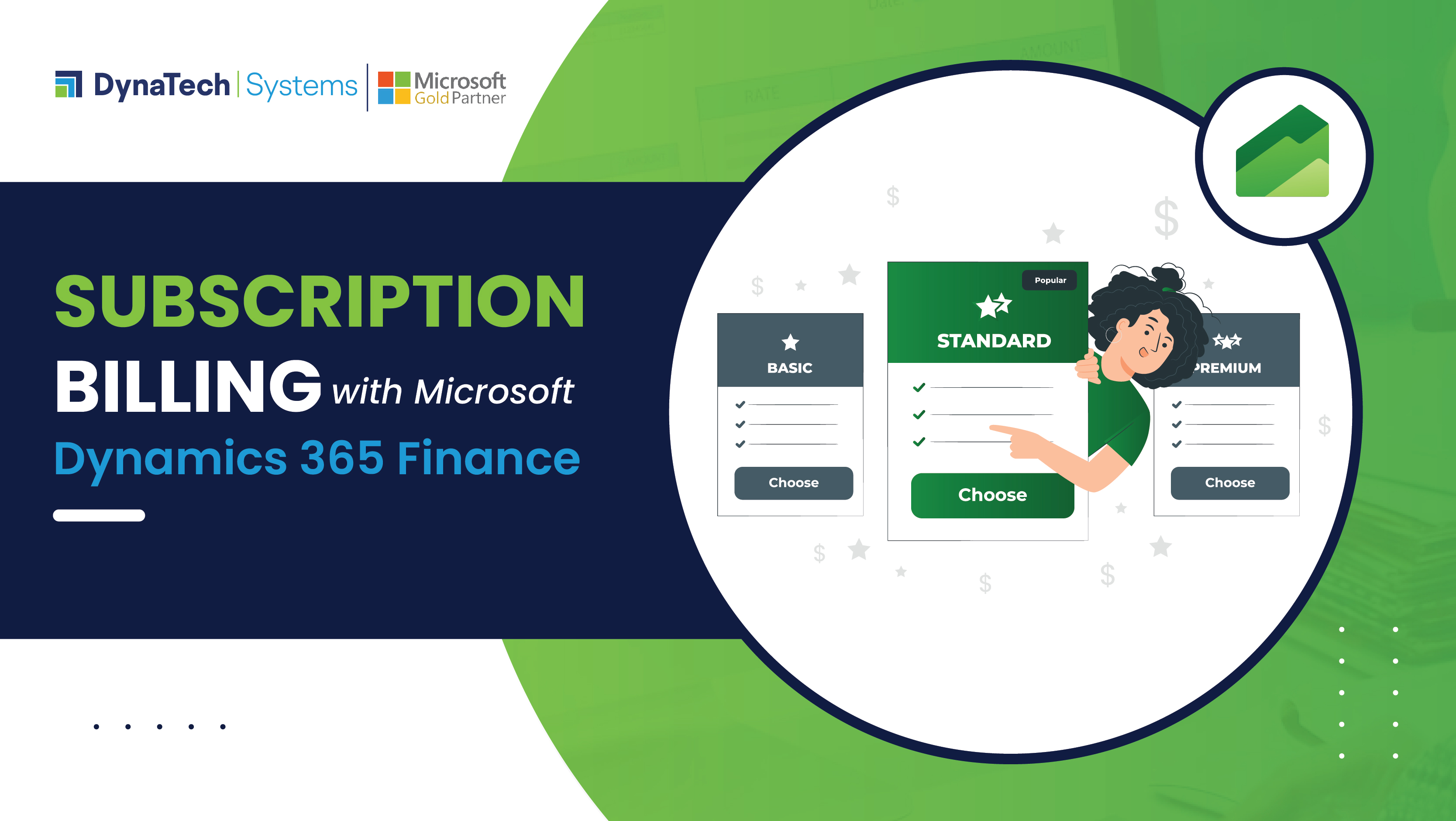The subscription-based economy used to be limited to certain industries, such as magazines, health clubs, and newspapers. However, nowadays, more and more companies offering recurring products or services have adopted subscription billing as a popular business model. Industries like music, movies, digital streaming services, and Products-as-a-service offerings are now utilizing subscription-based models. This billing model helps businesses achieve predictable revenue growth and improve customer retention by simplifying the billing process. Microsoft Dynamics 365 Finance offers robust capabilities for subscription billing that allow businesses to manage the entire subscription lifecycle, from creation to invoicing and payment processing. Additionally, the Accounts Receivable feature in Microsoft Dynamics 365 Finance can track customer invoices and incoming payments.
Subscription Billing: At a glance
Subscription Billing of Microsoft Dynamics 365 Finance has been designed to assist organizations in creating and handling subscription plans, tracking usage, and automating the billing and payment procedure. The subscription billing module can be used to create various billing models conditional to customer requirements and usage patterns. Billing models facilitate businesses in identifying the accounts receivable. The pricing models can be divided into three methods: one-time charges, recurring charges, and usage-based charges. Additionally, this module of Microsoft Dynamics 365 F&O aids businesses to supervise customer accounts, tracking usage, and automating invoicing and payment processing.
Three modules of Subscription Billing
These three modules can be used individually or can be grouped together to use.
Recurring Contract Billing
This module facilitates the billing model that is recurring and price management to offer govern pricing and billing parameters, contract renewal as well as merged invoicing.
Revenue and Expense Deferrals
This model helps to eradicate manual processes and reliance on external systems. This module aids in managing revenue by enabling concurrent insights into the revenue that recurs monthly.
Multi-element Revenue Allocation
To handle the pricing and revenue allocation through diverse teams, use a multi-element revenue allocation module that helps with revenue compliance.
Subscription Billing Configuration
Before starting with Subscription Billing in Microsoft Dynamics 365 Finance and Operations, enterprises must establish subscription plans that define the pricing and billing terms for their services. The subscription plans can be modified to include multiple pricing models and structures depending on the user/customer requirements. The number of users, the amount of data used, the time to avail services, or any other significant usage parameters are the core factors on which the pricing models are designed. After setting up the subscription plans, they can be assigned to individual customer accounts.
Subscription Billing Management
As soon as the subscription plans are configured, businesses can use Microsoft Dynamics 365 F&O to manage the Subscription Billing process. Microsoft Dynamics 365 Finance will track customer usage, determine the charges according to the pricing models, generate invoices, and manage the payments. Reporting is another excellent feature of subscription billing. Using the data acquired from the subscription billing process such as customer usage, invoice status, and payment status, the subscription billing module will generate a detailed report.
How to set up Subscription Billing in Microsoft Dynamics 365 Finance?
Pre-requisite
Subscription Billing cannot be used with the Revenue Recognition feature. It is mandatory to disable that feature, before enabling the subscription billing feature.
Steps
1. In Microsoft Dynamics 365 Finance, open the Feature Management workspace. Click the All tab. Enter Revenue recognition in the filter and pick the feature name as the filter.
2. Choose the Revenue recognition feature and select Disable.
3. Again, in the Feature Name filter, mention Subscription billing and pick the module filter.
4. Choose the Subscription billing feature and select Enable.
5. Choose one of the three modules from the above-mentioned list and select Enable.
6. Repeat step 5 for the remaining two modules.
Integration with other Microsoft Dynamics 365 Applications
All Microsoft products are versatile. Microsoft Dynamics 365 Finance can be integrated with other applications of the Microsoft Dynamics 365 Business suite such as Microsoft Dynamics 365 Sales and Microsoft Dynamics 365 Customer Service. This integration is quite valuable when businesses wish to create a unified customer experience by yielding real-time access to customer data across multiple departments. The integration of the subscription billing feature can be done among other Microsoft Dynamics 365 applications, along with Microsoft Dynamics 365 Finance to offer a seamless billing experience for customers.
End Note
Subscription billing is a powerful tool for businesses offering recurring products or services, and Microsoft Dynamics 365 Finance provides a comprehensive subscription billing feature. With this feature, businesses can manage the entire subscription lifecycle, from invoicing to payment processing, and enjoy benefits such as predictable revenue streams, improved customer retention, and simplified billing processes. Additionally, businesses can leverage the integration of subscription billing with other Microsoft Dynamics 365 applications, providing a unified customer experience and simultaneous access to customer data.
Enterprises can also integrate powerful tools like SAP that render innovative subscription-based business models. It is highly flexible and can automate various processes like rating, billing data preparation, and subscription generation.
To learn more about Subscription billing, contact experts at DynaTech Systems at sales@dynatechconsultancy.com.




























